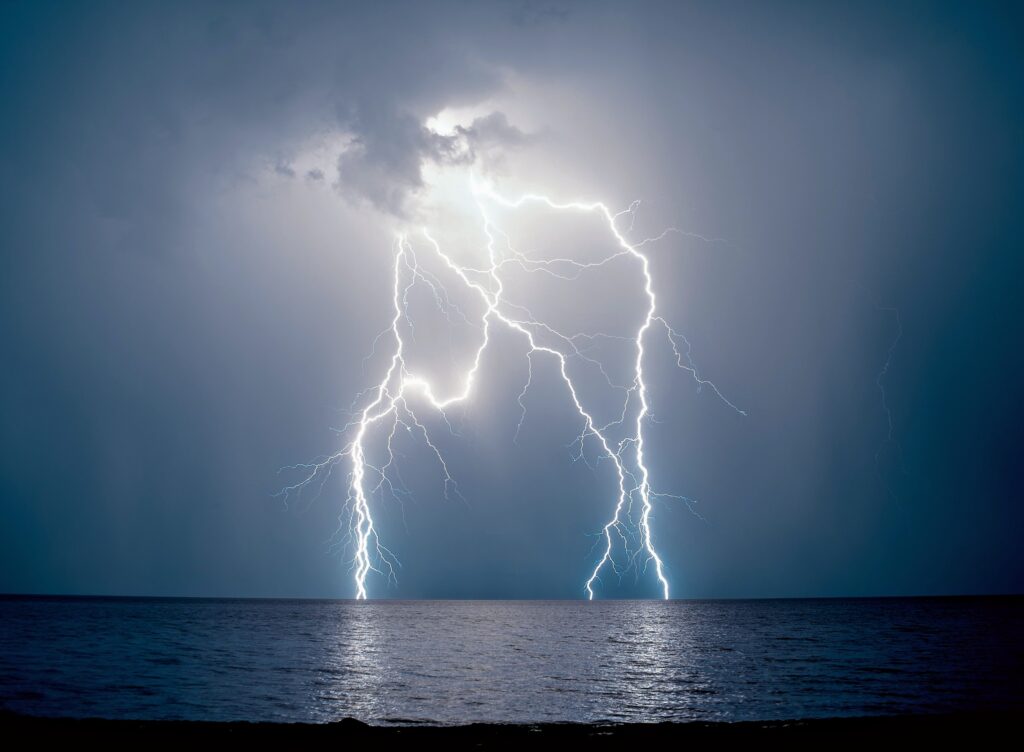
For centuries, the enigma of how lightning forms has eluded scientists, despite understanding that it discharges when charge imbalances within a thundercloud break down the surrounding air. The precise physics that triggers this spectacular natural phenomenon has remained a mystery—until now. A research team led by Victor Pasko, an electrical engineer at Penn State, has potentially unraveled this mystery. Utilizing advanced mathematical modeling and extensive field observations, the team has mapped out the series of events that transform a few stray electrons into a sky-splitting bolt of lightning.
“Our findings provide the first precise, quantitative explanation for how lightning initiates in nature,” Pasko explained. “It connects the dots between X-rays, electric fields, and the physics of electron avalanches.”
Tiny Collisions, Massive Sparks
The core of this new explanation lies at the intersection of two atmospheric phenomena. Firstly, thunderclouds are interlaced with strong electric fields due to updrafts that separate positive and negative charges. Secondly, the upper atmosphere is perpetually bombarded by cosmic-ray electrons traveling at nearly the speed of light. Using a numerical framework known as the Photoelectric Feedback Discharge model, the researchers demonstrated that a sufficiently strong cloud field can propel these cosmic-ray electrons into a state of overdrive.
The accelerated particles collide with nitrogen and oxygen molecules, emitting high-energy X-rays and generating a new wave of electrons. This process triggers further collisions, creating what physicists refer to as a relativistic runaway electron avalanche.
“By simulating conditions with our model that replicated the conditions observed in the field, we offered a complete explanation for the X-rays and radio emissions that are present within thunderclouds,” Pasko said.
Tracing Lightning Back to Its Roots
Doctoral student Zaid Pervez played a crucial role in testing the model’s robustness. He incorporated data collected by satellites, ground receivers, and even high-altitude spy planes that capture the hidden electrical activity inside storms. Pervez also referenced earlier studies on compact inter-cloud discharges—small lightning flashes within dense cloud volumes.
“We explained how photoelectric events occur, what conditions need to be in thunderclouds to initiate the cascade of electrons, and what is causing the wide variety of radio signals that we observe in clouds all prior to a lightning strike,” noted Pervez.
The results were consistent. Whenever the model replicated the exact electric-field strengths inferred from observations, it predicted the same bursts of X-rays and radio waves—signals that researchers have documented for decades but never fully comprehended.
The Secret Storm Inside the Cloud
Lightning researchers have long been puzzled by terrestrial gamma-ray flashes—brief bursts of X- and gamma-rays detected above thunderstorms, even when no visible lightning occurs. The new framework finally clarifies this discrepancy.
“In our modeling, the high-energy X-rays produced by relativistic electron avalanches generate new seed electrons driven by the photoelectric effect in air, rapidly amplifying these avalanches,” Pasko noted.
This runaway reaction varies in intensity, producing X-rays even when optical and radio signals remain weak or absent. This explains why gamma-ray flashes can originate from regions that appear optically dim and radio silent. In essence, a cloud can host an intense sub-visible storm of electrons and photons without producing a visible lightning stroke. Only when the avalanche becomes sufficiently large does the cloud discharge traditional lightning.
Spotting Lightning Before It Strikes
The Photoelectric Feedback Discharge model outlines the exact conditions necessary for electron avalanches to self-sustain, providing meteorologists and atmospheric physicists with a concrete predictive tool. The published equations invite researchers to apply real-time field data or to test them in diverse environments.
This study could revolutionize how scientists interpret satellite detections of gamma-ray flashes and refine lightning-forecast algorithms. It may also shed light on high-altitude electrical phenomena such as blue jets and elves. The research holds practical implications as well; lightning remains a leading cause of weather-related fatalities and imposes significant costs on airlines and power companies annually.
Storm Simulations in 3D
The next challenge is to integrate the model with three-dimensional cloud-scale simulations, capturing how local avalanches merge into kilometer-long channels. Pervez and his colleagues are eager to test whether dramatically different thunderstorm environments—such as volcanic plumes or Martian dust storms—might follow the same blueprint.
For now, this discovery closes one of atmospheric science’s most enduring gaps. The unseen dance of cosmic electrons, roaring electric fields, and cascading photons turns out to be the silent countdown to every crack of lightning we witness. By capturing that dance in numbers, Pasko’s team has illuminated the hidden spark that electrifies the sky.
The study is published in the Journal of Geophysical Research: Atmospheres.
Like what you read? Subscribe to our newsletter for engaging articles, exclusive content, and the latest updates. Check us out on EarthSnap, a free app brought to you by Eric Ralls and Earth.com.







